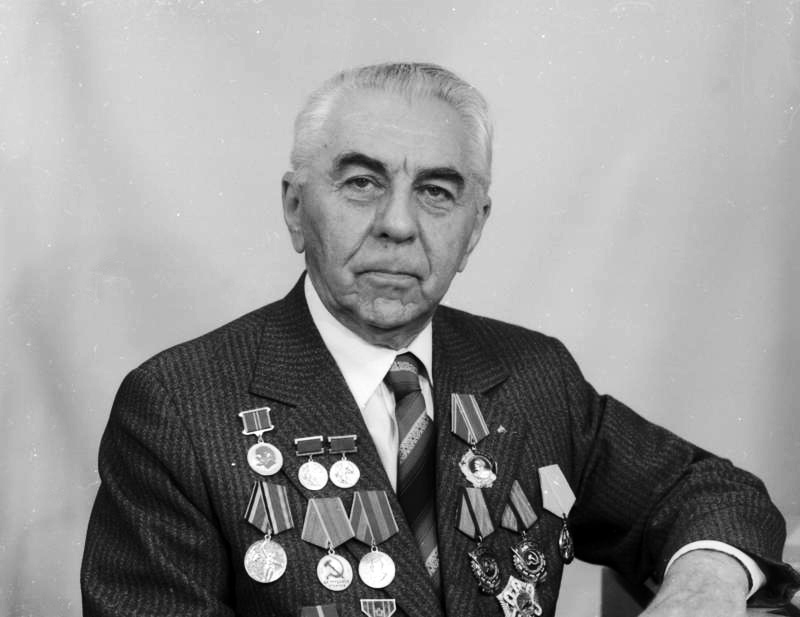Remembering founding fathers: Venedikt Dzhelepov
News, 12 April 2022
On 12 April, the Joint Institute for Nuclear Research pays tribute to Venedikt Petrovich Dzhelepov (1913-1999) who is one of its founders, an outstanding physicist, science organizer, and the first Director of the Laboratory of Nuclear Problems JINR.
Professor, a Corresponding Member of the USSR Academy of Sciences and RAS, V. P. Dzhelepov held the post of the DLNP Director for 33 years (1956–1989) and stood at the origins of the Institute and the Laboratory, as well as the city of the JINR’s location Dubna. He arrived at the Hydroengineering Laboratory of the USSR Academy of Sciences on the site of future Dubna in 1948 and was appointed the Deputy Head of the Laboratory M. G. Meshcheryakov. Later, after it got the name of the Institute of Nuclear Problems of the USSR Academy of Sciences, he was appointed as the Deputy Director for Scientific Work of the Institute.
Dzhelepov had the experience in launching the first Soviet cyclotron of the Radium Institute of the USSR Academy of Sciences and constructing the 12 MeV proton cyclotron in Leningrad Physicotechnical Institute. So, the scientist played one of the most important roles in the launch of the first Soviet Synchrocyclotron of the Institute of Nuclear Problems of the USSR Academy of Sciences in 1949 and its subsequent reconstruction to a record energy of 680 MeV in 1953. He is by merit considered one of the founders of high energy physics as a research field in the Soviet Union.
After the foundation of the Joint Institute for Nuclear Research in 1956, the Institute of Nuclear Problems of the USSR Academy of Sciences was transformed into the Laboratory of Nuclear Problems JINR. V. P. Dzhelepov was elected its Director. He taught a significant number of young scientists. Their works later became widely known to the international scientific community.
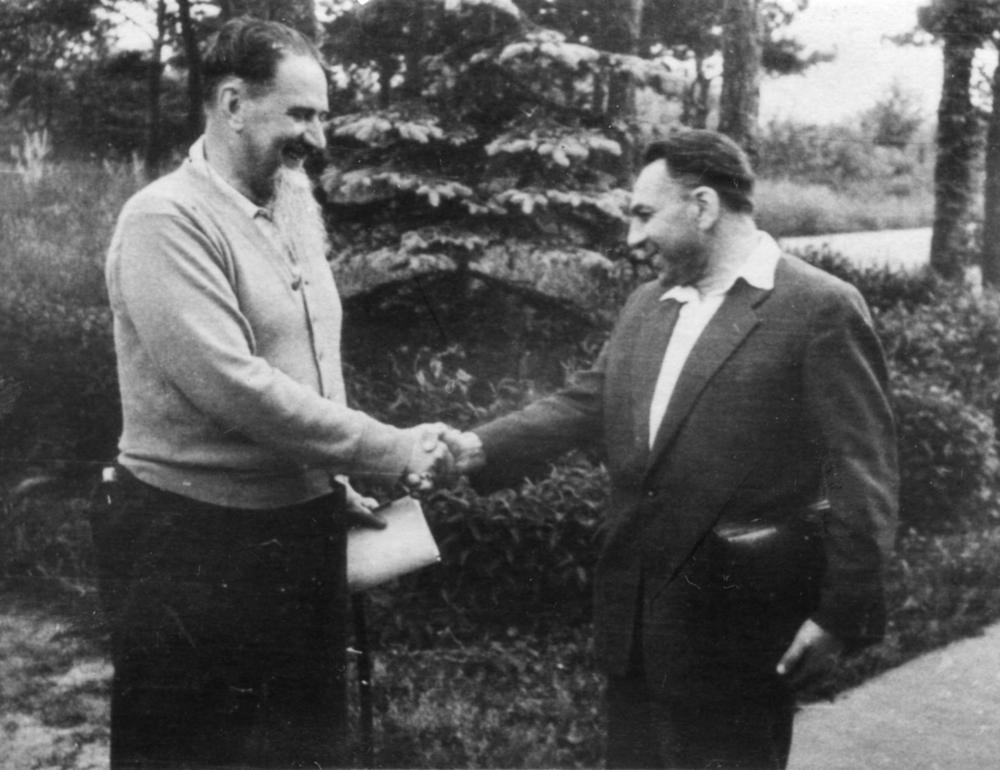 In the picture (from left to right): I. V. Kurchatov and V. P. Dzhelepov,
In the picture (from left to right): I. V. Kurchatov and V. P. Dzhelepov,
1959.
Throughout his entire life, the scientist combined various positions as a talented science organizer and public figure. For example, he had been the Deputy Academician-Secretary of the Department of Nuclear Physics of the USSR Academy of Sciences since 1967. In 1962 – 1970, he chaired the expert commission of the USSR Higher Attestation Commission on Physics and Astronomy. He was a member of international commissions in the fields of particle physics, accelerator physics, and scientific and technological cooperation. Venedikt Petrovich repeatedly headed scientific delegations of the USSR and JINR at major international physics forums. He had been a member of the editorial board of four physics journals, including international ones, for many years.
Scientific works by Venedikt Petrovich are devoted to nuclear physics, physics of elementary particles, accelerator physics and technology. He carried out the study on elastic neutron scattering at neutrons, which made it possible to prove the symmetry of nuclear forces at high energies. He was the first who investigated the spin dependence of the exchange forces for a neutron-proton system. Studying the formation of pions in nucleon collisions, he confirmed the charge independence of nuclear forces. The scientist discovered the electronic decay event of negative pions and studied the phenomenon of the negative muon capture in hydrogen gas. He determined the probabilities of these processes that was important for confirming the universality of the weak interaction. He discovered a number of new muon catalysis reactions. V. P. Dzhelepov found a resonance dependence of the formation probability of mesomolecules of heavy hydrogen isotopes. He conducted a wide range of studies on pion-nucleon interactions at high energies.
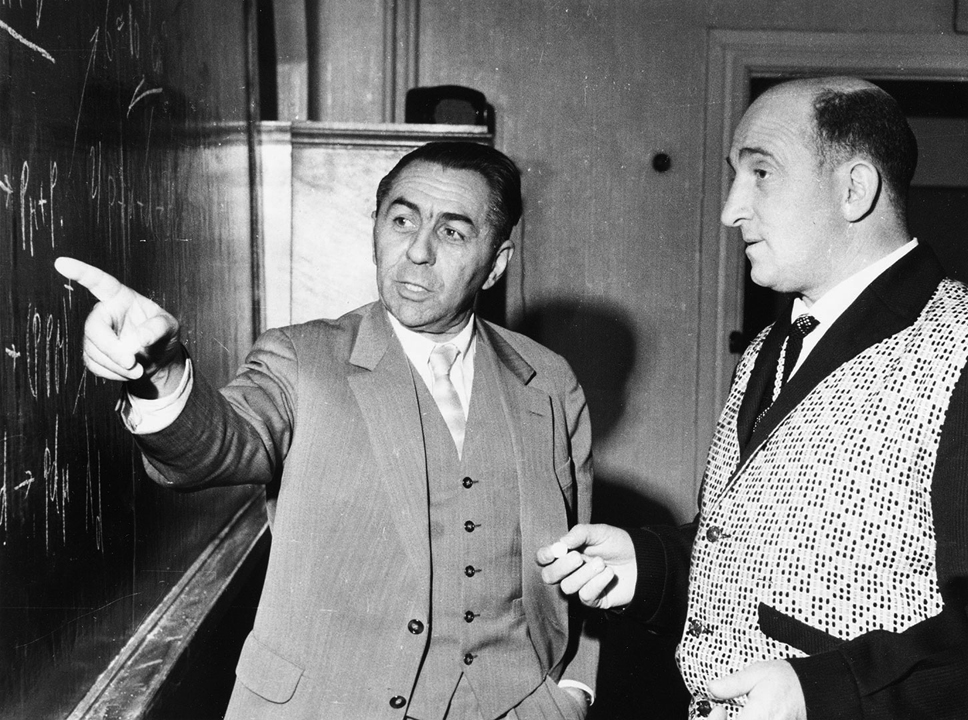 DLNP JINR Director V. P. Dzhelepov and Academician G. I. Budker,
DLNP JINR Director V. P. Dzhelepov and Academician G. I. Budker,
1961.
V. P. Dzhelepov was one of the first to pay attention to the possibility of using high-current isochronous cyclotrons to control subcritical assemblies and create safe nuclear power and facilities for nuclear waste transmutation on this basis.
The scientist pioneered in the USSR the use of high-energy protons and other charged particles for the treatment of malignant tumours. In 1967, Venedikt Petrovich initiated the modernisation of the Synchrocyclotron into the Phasotron and research on proton therapy, which made it possible to treat cancer patients. In 2000 – 2013, more than 1,000 patients underwent the irradiation course in the DLNP Medico-Technical Complex.
In 1978, with the support of Dzhelepov, the biological research sector was established in DLNP. In 1988, the Department of Biophysics of DLNP was organized. In 1995, Department of Radiation and Radiobiological Research was created. After the death of the scientist in 2005, the Laboratory of Radiation Biology was established.
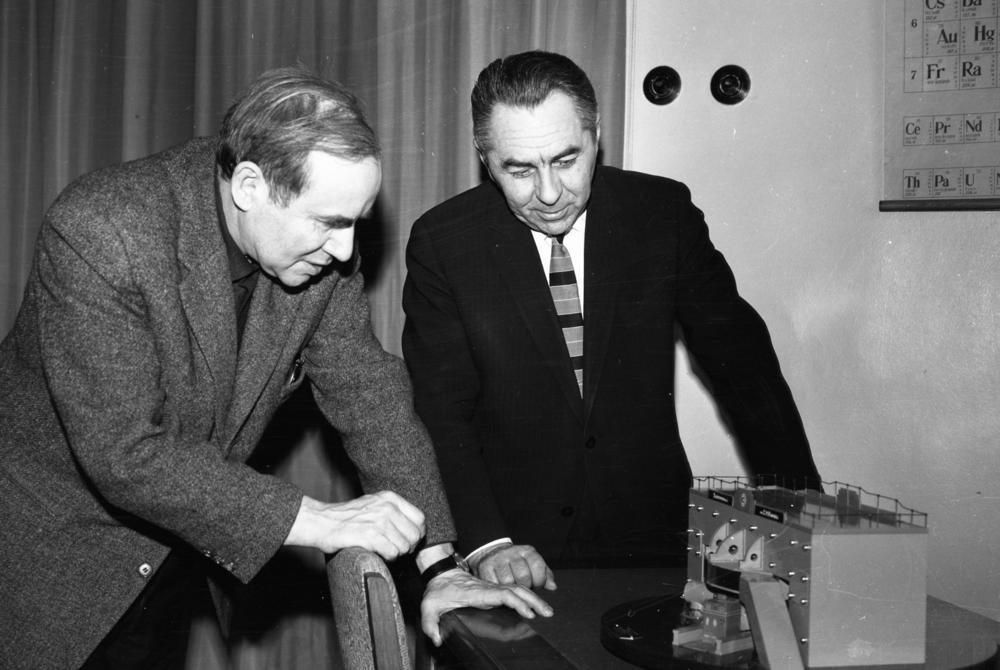 In the photo: DLNP Director V. P. Dzhelepov (in the right) is showing the Synchrocyclotron’s layout to the writer Robert Jungk,
In the photo: DLNP Director V. P. Dzhelepov (in the right) is showing the Synchrocyclotron’s layout to the writer Robert Jungk,
1962.
Contemporaries of V. P. Dzhelepov note that he was a natural leader, at the same time showing a deeply humane attitude. Colleagues warmly noted his energy and optimism, which he had until the very last days, curiosity and creativity.
V. P. Dzhelepov received two State Stalin Prizes of the USSR, numerous orders and medals of the USSR and a number of other JINR Member States.
The Laboratory he headed now bears his name. One of the streets in Dubna is named after Dzhelepov. An annual tennis tournament is dedicated to the memory of Venedikt Petrovich and his cousin Boris Dzhelepov who was an outstanding physicist as well. A monument to two great scientists of DLNP Bruno Pontecorvo and Venedikt Petrovich was built in Dubna.
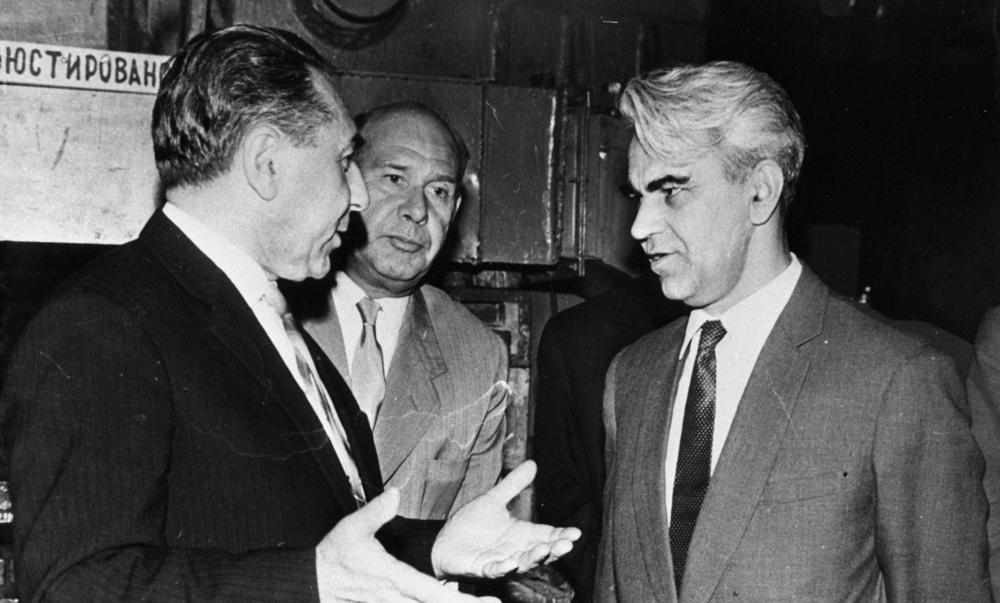 From left to right: DLNP Director V. P. Dzhelepov, JINR Director
From left to right: DLNP Director V. P. Dzhelepov, JINR Director
D. I. Blokhintsev, Academician M. V. Keldysh, 1962.
